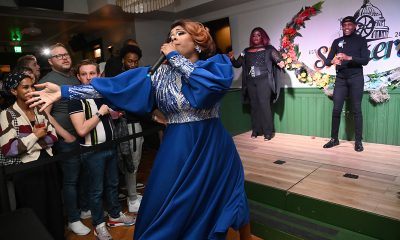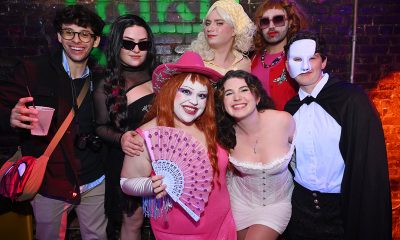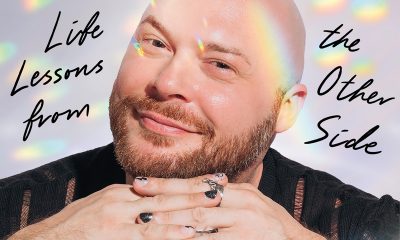Movies
SPRING ARTS 2017: movies — Festivals, series and a ‘Beast’ remake
Live-action Disney reboot features gays galore
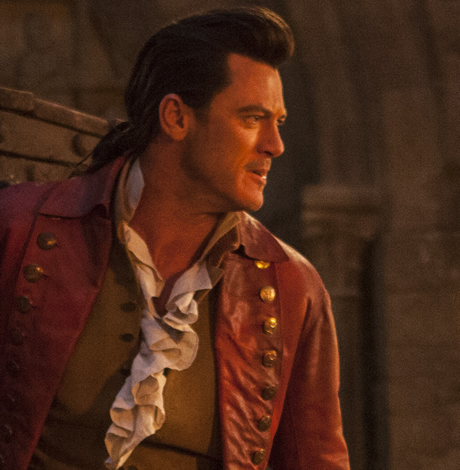
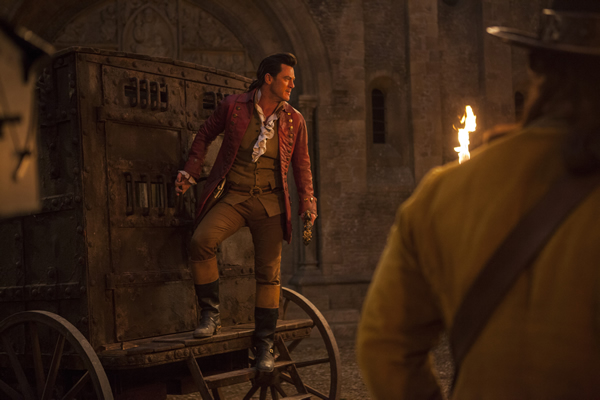
Out actor Luke Evans as Gaston in ‘Beauty and the Beast,’ a live-action remake of the Disney classic. (Photo courtesy Walt Disney Studios)
The biggest and queerest release of the 2017 spring movie season is Disney’s live-action “Beauty and the Beast.” Based on the classic 1991 animated movie, this version uses CGI to bring the enchanted objects to captivating life. Dan Stevens (“Downtown Abbey”) and Emma Watson (all those Harry Potter movies) play the title couple; Emma Thompson sings the title song.
Besides a substantial LGBT fanbase, the new release has a significant gay pedigree. The late Howard Ashman (“Little Shop of Horrors”) wrote the lyrics for the songs in the animated movie. (Alan Menken composed the score and Tim Rice wrote the additional lyrics.) The film is helmed by Bill Condon (“Dreamgirls” and “Gods and Monsters”), who’s openly gay as are actors Luke Evans as Gaston and Ian McKellen as Cogsworth.
No word yet on a D.C. screening, but “The Freedom to Marry,” a documentary from Eddie Rosenstein that features Evan Wolfson (long-time marriage activist) and attorney Mary Bonauto is in theaters now in New York and slated to open next weekend in Los Angeles. Details at freedomtomarrymovie.com.
Also on the marriage front is “Love v. Kentucky,” released in February and streaming now on Amazon, iTunes and others. It’s billed as an “intimate account of how two Kentucky attorneys with no background in vivil rights navigate their passionate opponenets and wrangle their reluctant allies” to the U.S. Supreme Court. Alex Schuman directs. Details at lovevkentucky.com.
The D.C. Shorts Film Festival & Screenplay Competition returns in September, but the team has two events coming up this spring. In March, the MENTORS Series will offer workshops for filmmakers. In April, the D.C. Shorts LAUGHS program will pair local comedians with funny films from past festivals. One of the funniest matches will be between Matty Litwack and “The Bench Project: Lost and Found,” a film with a delightful gay twist. Details pending. Check back later at laughs.dcshorts.com for details.
This spring, Reel Affirmations offers an exciting slate of films through XTRA, its monthly LGBT Film Series. Friday, March 24 offers the newly released “BWOY” and the 20th anniversary screening of “Watermelon Woman.” Directed by Sundance sensation John G. Young and starring Anthony Rapp, “BWOY” tells the story of a man rebuilding his life after the death of his son. In “Watermelon Woman,” writer/director/star Cheryl Dunye creates a fascinating fictional documentary about the (nonexistent) history of African-American women on film.
On Friday, April 21, XTRA tells the story of Ugandan transgender activist Cleopatra Kambugu in “The Pearl of Africa.” “The First Girl I Loved” (Friday, May 12) is a remarkable lesbian coming-of-age story that won the “Best of Next!” Award at the 2016 Sundance Film Festival. And on Friday, June 16, the screening room turns into a ballroom for “Kiki,” the new documentary described as a sequel to “Paris Is Burning” that captures the youth-led expansion of New York City’s ballroom scene.
In addition, Reel Affirmations will host the Reel Trans Film Festival on Saturday, May 20 at the Studio Theatre. Miss Major Griffin-Gracy will be on hand to discuss a documentary about her revolutionary life.
Several other regional film festivals will also bloom this spring. While they haven’t announced their 2017 schedules as of press time, they have all been included rich LGBT fare in recent years. The Annapolis Film Festival runs March 30-April 2 and the Washington Jewish Film Festival runs from May 17-28.
Filmfest D.C. runs April 20-30 and will include “Play the Devil,” a thrilling coming-of-age story set in Trinidad. Organizers promise more information soon.
Legendary filmmaker and Baltimore native John Waters, recently presented with the Timeless Star Dorian Award by the Gay and Lesbian Entertainment Critics Association, is staying mum about the film he will be hosting for the 2017 Maryland Film Festival which runs in Baltimore May 3-7. He and a slate of exciting films will be on hand to welcome guests to the revitalized SNF Parkway Film Center (5 W. North Ave., Baltimore).
AFI Silver in downtown Silver Spring, Md., continues to present the latest indie films from around the world, along with curated explorations of classic films from Hollywood and international cinema. A highlight of their spring schedule is All About Almodóvar which runs March 4-April 27. The tribute to the legendary queer Spanish director includes a wide sampling of his films from his early anarchic films released in the heady days after the fall of Franco (“Labyrinth of Passion”) to his delicious delirious farces (“I’m So Excited”) to his more recent melodramas (“Volver”).
A special evening for dedicated Almodóvar fans will be the double bill of “Matador” (1986) and “Law of Desire” (1987) on Tuesday, March 21. Both films feature outstanding performances by a young Antonio Banderas and Almodóvar muse Carmen Maura.
For the whole family, AFI offer series on the Muppets (March 4-April 23) and the Marx Brothers (March 24-April 20). There’s also a centennial tribute to actor Kirk Douglas who founded a Hollywood dynasty while helping to break the Hollywood Blacklist in the 1950s.
Also at the AFI, “Little Men,” the moving story about a budding bromance between two Brooklyn teens by openly gay director Ira Sachs (“Keep the Lights On”), will screen March 6-9. Also look for the director’s cut of the dystopic “Blade Runner” (March 31-April 2), John Hurt and Richard Burton in “1984” (April 20) and Angela Lansbury’s terrifying performance in “The Manchurian Candidate” (April 23 and 26). Lighter fare includes the steamy “Ramen Western” “Tampopo” (April 2) and Mel Brooks’ comic masterpiece “Blazing Saddles” from April 7-9.
One of the few studio releases with queer content this spring is “Raw” which opens on Friday, March 24. Some audience members at Cannes and the Toronto Film Festival fled the theater during the screening, but others hailed the first feature film by French director Julie Ducournau for its confidence and decadent style. The plot centers on a college freshman (Garance Marillier) whose life changes when a bizarre hazing ritual awakens sexual and culinary appetites in the former vegetarian.
On Friday, April 7, Landmark E Street Cinema is host to bad boy French director François Ozon. In a departure for the openly gay director, “Frantz” offers a somber tale about the aftermath of World War I set in the quiet German countryside and shot in black and white.
From April 21-23, Dan Savage’s HUMP! Film Festival comes to the Black Cat (1811 14th St., N.W.). HUMP! is a celebration of sexual expression that includes an amazingly diverse array of short amateur porn videos.
Some mainstream releases of note include:
• “The Last Word” (March 10) with Shirley MacLaine as a retired businesswoman who hires Amanda Seyfried to write her life story.
• “T2 Trainspotting” (March 24), reunites the original stars in a sequel to the classic 1996 movie.
• “Song to Song” (March 24) stars Ryan Gosling, Rooney Mara, Michael Fassbender and Natalie Portman’s as two entangled couples in Terence Malick’s tale of seduction and betrayal set against the backdrop of Austin’s contemporary music scene.
• “Unforgettable” (April 21) stars Katherine Heigl in a dramatic turn as Tessa Connover, a woman who becomes obsessed with her ex-husband’s new wife (Rosario Dawson).
Just in time for Mother’s Day, the cinematic mother-daughter team of Amy Schumer and Goldie Hawn romp their way through “Snatched” (May 12). The comedy is scripted by Katie Dippold, who wrote last year’s “Ghostbusters” remake, and features lesbian comic Wanda Sykes.

Goldie Hawn, left, makes a welcome return to the big screen with ’SNATCHED,’ with Amy Schumer. It’s her first major role since 2002. (Photo courtesy Twentieth Century Fox Film Corp.)
And on the superhero front, there are some major entrances and exits coming this spring. On Friday, March 3, longtime LGBT ally Hugh Jackman steps away from the Wolverine franchise in “Logan.” On Friday, June 2, Gal Gadot grabs the golden lasso for her first solo feature film as “Wonder Woman.” And on a lighter note, Groot and the gang return in “Guardians of the Galaxy Vol. 2” on May 5.
And for those who don’t have regular access to theaters that screen LGBT-affirming works or if you just want to someone else to curate a series for you, check out Frameline, a San Francisco-based media arts non-profit that releases LGBT-affirming films monthly on its YouTube channel. Search “Frameline” on YouTube to find out more. About 50 films hosted over the last five years are available for viewing there.
The fifth annual D.C. Web Fest is Saturday, April 1 from 4-11 p.m. featuring web series, online short films, apps and online games.
Movies
Long-awaited ‘Pillion’ surpasses the sexy buzz
A film to admire from a promising new queer director
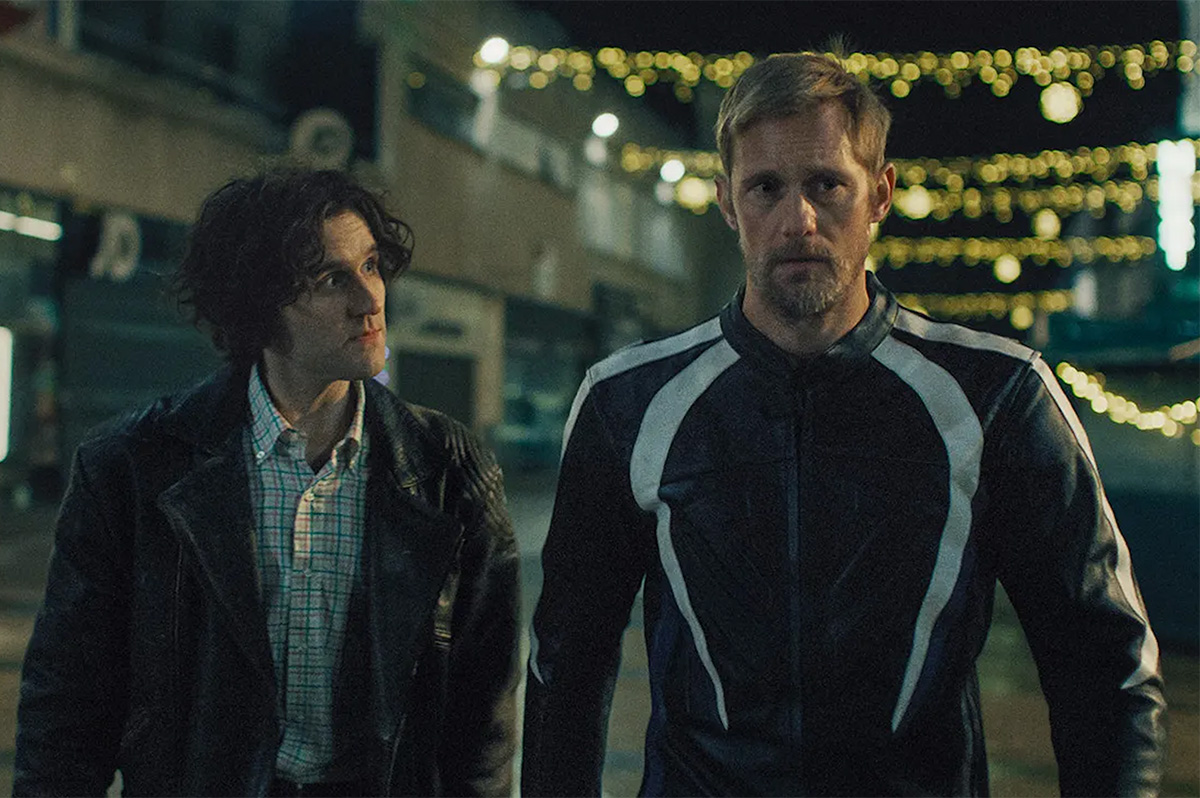
In case you didn’t know, “Pillion” – the title of debut UK filmmaker Harry Lighton’s buzzy gay “fetish rom-com” starring Scandinavian hunk Alexander Skarsgård and “Harry Potter” alumnus Harry Melling – refers to a rear seat on a motorcycle for a passenger, and the person who occupies it is said to be “riding pillion.”
That definition might be useful going into the movie’s story of an introverted gay Londoner who becomes involved with a handsome but icy biker and is introduced to the subculture of Dom/sub relationships, in that it evokes a dynamic that might be said to reflect the one that exists between its two main characters. There is nothing about Lighton’s disarmingly humorous and surprisingly sweet film, however, that seems to imply an interest in offering pat explanations or easy value judgments about the lifestyle it explores, so to think its title is meant as some kind of summation would be a mistake.
It centers on Colin (Melling), a timid parking warden who still lives with his mom and dad (Lesley Sharp and Douglas Hodge) and sings with a barbershop quartet as a hobby. After a gig singing Christmas carols at a gay bar, he catches the eye of sleekly confident Ray (Skarsgård), who gives him his phone number after a brief and thrillingly intimidating interaction. Prompted by his parents, he decides to call, leading to a steamy hookup in a back alley – and eventually, a live-in BDSM situation in which he becomes Ray’s official “sub,” catering to his every need and becoming a member of the gay biker community to which he belongs. It’s all perfectly fine with Colin, who embraces his role with pleasure; but when he begins to long for a deeper connection with the enigmatic and emotionally distant Ray, it triggers a disruption in the dynamic of their relationship, putting it to a test it may not be able to pass.
“Pillion” was already creating a stir before its prize-winning debut at the Cannes Film Festival last May, largely thanks to the highly publicized casting of Skarsgård as the leather-clad leading man in a gay BDSM romance. But near-universal critical acclaim quickly validated the buzz, turning it into one of 2025’s most anticipated movie releases – particularly, of course, for gay audiences, and especially for those who are part of the BDSM community and rarely get the opportunity to be “seen” on the screen as anything other than a lazy stereotype.
Naturally, much of that buzz has been driven by a prurient fervor, fueled by the promise of kinky onscreen sex and rumors of a notorious close-up highlighting the full-frontal assets of a certain Swedish movie star. One of the things that’s remarkable about “Pillion,” however, is that while it certainly doesn’t downplay the overt sexual aspect of the relationship at its center, it doesn’t use them to titillate or shock us. Its plentiful scenes of intimacy are sexy, yes, but they also chart the development of the characters’ bond together, expressing feelings that can only be left unspoken within their agreed-on dynamic. They advance both the story and our awareness of the characters’ psychology, and while they may occasionally provide a jolt for viewers not accustomed to seeing gay fetish sex portrayed explicitly on screen, they successfully capture the joy of the experience instead of making it feel sensationalized or lurid.
In fact, once “Pillion” ends, it’s not the sex (not exclusively, at least) that lingers in our mind; it’s the delicate balance it maintains between tension and ease, detachment and tenderness, rigidity and flow – mirroring the surging passions contained within the strictly regimented order of their power dynamic. It’s the depth of Melling’s film-anchoring performance, in which he undergoes an entire voyage of discovery that emphasizes Colin’s strength, not his timidity, and allows us to relate to him in ways that may surprise us. It’s the authenticity of the relationships between all the characters, from Sharp and Hodge’s doting parents to Scissor Sisters front man Jake Shears (in his film acting debut) as a fellow sub who ignites a spark of jealousy between Colin and Ray; most of all, it’s the way that it allows the story to move, with a slow and methodical rhythm – reflected in the measured strains of Eric Satie’s “Gymnopode No.1” that echo through Oliver Coates’ evocative score – that makes it all feel perfectly natural.
And yes, it’s also the presence of Skarsgård, who subtly (and with wry humor) contrasts tight-lipped alpha stoicism with his flawless male beauty that feels like a force of nature. We don’t know much about Ray, ever, through the dialogue in Lighton’s tersely worded screenplay, but we can draw our own conclusions from the eloquent silence that Skarsgård wraps around the character like a security blanket. Best of all, he never uses his “Dom” role in the film to overshadow Melling – it’s Colin’s story, after all, and Skarsgård’s Ray deploys a tactic of “quiet command” on him throughout without ever stealing his spotlight.
As for the film’s writer/director, Lighton manages perhaps the most delicate balancing act of all. He takes a story (adapted from a novel by Adam Mars-Jones) about someone discovering himself in the BDSM community, who engages in sexual behavior that’s likely out of the comfort zone of many viewers and enters a “romantic” partnership most people would find unacceptable, and turns it into a movie that is all about the complexities of human experience. You may not know much (or want to) about life as a sub in a BDSM partnership, but you know what it feels like to love someone, and to long for love in return; Lighton understands that “Pillion” is a story about that, and he knows how to tell it so that you will understand it, too.
That said, it’s obvious there will be many audiences out there for whom a movie about leather-clad queer fetish sex might simply be a step too far for them to take. Anyone approaching “Pillion” should be aware that, depending on your own level of familiarity – or comfort – with the BDSM lifestyle, your reaction may vary across a spectrum of perspectives; if you’ve been around it, nothing the movie shows you is likely to ruffle your feathers, and if you haven’t, well, only you know your limits.
For us, it’s a film to admire from a promising new queer director, shining a light on an insular culture within the larger rainbow community with intelligence, dignity, and a refreshing lack of the homophobic tropes that so often haunt queer movies, even when they are made by queer filmmakers themselves.
Unfortunately for Americans, while “Pillion” was released in the UK on Nov. 28, we won’t get a chance to see it until Feb. 6. With the buzz now even stronger and the stars in full “promotional” mode on the talk show circuit, we thought it would be a good idea to let you know that the wait might still be a while, but it will be worth it.
After all, as any good Dom can tell you, a pleasure withheld tastes even sweeter when it’s finally given.

What does longing for your child look like? What happens when they resurface in front of you, when that rift was once an immeasurable open sea — a searing pain that silently hollowed you out for decades? For the child wrenched away by circumstance and thrown into the purgatory of always feeling in-between: in between home, in between being a whole person, in between who you could have been and who you are now — what does it mean to become and belong?
In filmmaker Jota Mun’s documentary “Between Goodbyes”, the fragmented yearning for home, family and identity are woven together into a tremendous and at times dream-like contemplation of the self, focused on various family members set adrift by a deceitful international adoption machine.
The story is focused on Mieke Murkes, a queer Korean adoptee who grew up in the rural village of Vaassen in the Netherlands. Shortly after her birth in 1982, she was raised by Willy, a devout evangelical Christian woman. But the story does not begin with Mieke in Vaassen. It begins with Okgyun, her original mother, walking through an ephemeral meadow as she makes her way to a shoreline. This is our first point of loss.
It is important to understand how the stories of Okgyun and Mieke exist. In “Between Goodbyes”, we see a frustrating glimpse into the cultural and political forces that created this separation. Since 1955, 200,000 children have been adopted from South Korea, and just three years ago, several of these adoptees found that their documents had been falsified. Murkes would sift through her own papers in “Between Goodbyes”, noting their dull and rote descriptions of her physical appearance and health. “The paperwork is as if you’re buying a new car,” Murkes says.
Written nearby: “Both parents are unknown,” a falsehood that leaves the family breathless. It is a gut punch.
This March, a South Korean governmental agency admitted that it had violated the rights of adoptees, but an investigation that began in 2022 at the behest of over 350 Korean adoptees has been halted. Whether or not retribution can ever be paid is up in the air, but the reeling grief and complicated self-reckoning many of these adoptees and their families face are rendered and expressed with deep tenderness in Mun’s documentary. “I did not know how to fit the Korean part of me in there,” Murkes said.
When Okgyun was pregnant with Mieke, she was also raising three other daughters: Mijin, Mikyung and Taekyung. The population was booming, and mothers like herself were being shamed for continuing to have children. Considering abortion, Okgyun recounts a midwife who convinced her not to go through with it — that if the child were a boy, she should keep him. If it turned out to be a girl, she could give her away to live “a good life” in the U.S. “Men are always positioned above women,” Okgyun said. “I always hated that.”
After Mieke was born, Okgyun’s mother-in-law told her to give her away. “She was gone before I saw her face,” Okgyun said. “I let her go.” Her guilt tightens her throat, trembles in her voice. “I dreamed of Mieke a lot. I can’t tell you how many times,” Okgyun said. “Dreaming and forgetting, dreaming, and forgetting. The thought that kept me going is that one day I can find Mieke.”
What ensued was a several years-long search. Kwangho, Mieke’s original father, pleaded with an adoption agency for any leads about Mieke. They denied him several times and his desperation only grew. “I had to find her to be at peace before I die,” he said.
Meanwhile, Mieke’s own grief and confusion were compounding. When she was beginning to discover her queerness, she was deeply ingrained in local religious spaces. What made her feel free, the church treated as an aberration — as behavior that resulted from loss.
When she would eventually meet her original family, they, too, had trouble processing her queer identity and masculine presentation. To them, queerness was “acquired” from being raised in a foreign land. With time, they grew to embrace Mieke and her partner, Marit, even as misunderstandings arose. Of this, Mieke’s conflictedness is explored. Gay rights are more advanced and accepted in the Netherlands than in South Korea, but this does not mean contending with her queerness would have been easy with her adoptive mother, Willy. “It probably would have disappointed her a lot,” Mieke tearfully revealed.
Mieke’s stepping in between knowing and unknowing is reminiscent of Okgyun’s dreaming and forgetting — their grief and confusion move within them, replicating themselves over and over again. “Between Goodbyes” dives deeply into this in order to offer a portrait of healing: of its complications and the necessity of community support to achieve this.
Mun discusses the film with the Los Angeles Blade, diving into how reunification between adoptees and original family members is, in many ways, made nearly impossible by factors like language and cultural barriers enforced and held tightly in place by the international adoption system. This film illustrates a break in this narrative and the mighty efforts behind it all.
A broadcast version of “Between Goodbyes” is now available to stream on PBS. See below for more information.
Can you tell me about the inception of making “Between Goodbyes”? Have you always wanted to tell a story about international Korean adoption from a queer perspective?
As a queer Korean adoptee myself, [there are] so many intersections that I haven’t quite seen on screen before. So I was always really excited about making something about my community. And then I’d say, in 2017, is around when I started getting closer to zeroing in on the idea. I think part of it was through befriending Mieke and hearing her parents’ story. Hearing about their efforts really blew my mind.
So much of the standard narrative is that adoptees initiate the search. So even before meeting [Okgyun and Kwangho], it just felt like it spoke so loudly of not only their character, but a piece of the puzzle that I had never considered — that they could be longing for us. And I think as an adoptee, you always wonder what [your original parents] would think. So it’s very noticeable that we almost don’t ever hear from them directly. Even in narrative stories of adoption, they’re usually deleted, or they’re written in a really flat way that feels like they’re serving the plot. I’ve never seen a depiction of birth mothers in particular who are questioning their own circumstances or feel angry about it.
There’s a lot of nuance given to all of the different people that we see in the story. The pain is layered and deep, and we don’t just view it from one perspective. What was it like having to portray this hurt, when many adoption stories typically focus solely on the adoptee’s emotional and personal journey?
It’s so unique through each lens, even though it’s the same pain. Like her sisters — of course, it’s going to affect them. Even if she never said anything, they must have felt it. It just ripples out to everyone and keeps expanding.
Originally, it was focused on Mieke, because that’s who I had the most access to, and she’s the closest to me in terms of general identity markers. So in my mind, I felt more confident that I could tell her story in a nuanced way. But what about Okgyun? I was hitting a similar barrier of communication that Mieke had hit. That’s part of why our main producer, Zoe Sua Cho, was so essential in conveying more about Okygun and the original family’s side of the story.
When I was in the early stages of developing the film, there was a quote that I felt was really inspirational: “In our hurting, we did not realize that we were stolen from each other” (by SN Désirée Cha from Outsiders Within Writing on Transracial Adoption.) The same quote came back to me in the edit and helped us find a narrative structure that went beyond just one person’s perspective.
What if the main character is the collective trauma, a singular event that causes the family to splinter and suffer across decades? I wanted to explore how tempting it is in these moments of righteous anger at systemic problems to end up fighting with each other. I feel like they both had to mourn something that was so much bigger than any one family. Mieke’s adoption affected so many people that I almost wanted that to be the main character. How do we not get lost in that pain and still try to come back together? It’s too much to carry alone.
So the main character is not necessarily one person, but the issue that you’re trying to tackle throughout the story. It also makes me think about how the documentary itself, or the making of it, also participates in this community healing that I feel like was the focus of “Between Goodbyes”.
I hope it’s an important layer. Suffice to say I think I always deflect to name a singular main character. I wanted to show everyone’s point of view while of course highlighting especially Okgyun and Mieke.
What else can you share about your approach to filmmaking?
You know, I was on this wonderful panel earlier this year, hosted by A-DOC, and I kind of surprised myself in preparing for it. I realized, actually, I have a lot of strong beliefs on filmmaking ethics that I hope come through in the film. For example, I reject the genius artist myth. The fantasy that if an artist is talented enough, they get permission to treat everyone around them terribly. That exploitation and squeezing things out of people is the best way to make great art.
Instead, I want to believe that the sensitivity, the care, and emotional work I poured in is going to come shining through in the film. And I do think that’s part of why we witnessed so many intensely vulnerable moments that I couldn’t have predicted.
This emotional connection to the film is also, visually, represented in artistic and inventive ways. There are sequences interspersed throughout that feel dream-like and cinematic. Creatively, what was it like to structure and craft how you wanted those scenes to be, the weight that they carried, and why you wanted to represent them in that way?
Aw, thanks for saying so! I was clear from the beginning that I wanted certain moments in the film to look as cinematic and epically life-changing as they feel in real life. Because visually, sometimes these moments of heartbreak can look rather dull. The deep heartbreak of a farewell at the airport. What does it look like? It looks like two people hugging in a very normal-looking terminal. But that’s not what it feels like. It feels larger than life. So to me, every single one of the art [scenes] has a very literal symbolism in my mind.
I really enjoy the complexity given to the family, both through the artistic symbolism and through the different angles we get to view them in. When it comes to Mieke’s queer identity, there are varying levels of acceptance and also tension that co-exist. One of her sisters, Mikyung, skirts around terms and labels, instead saying Mieke is “like that,” and “I don’t know anyone like that.” There was this feeling that queerness is learned or acquired elsewhere — that Mieke “wouldn’t have turned out like that” if she had grown up with her original family in Korea.
I can’t be sure what they were implying but you know, I definitely didn’t want to fall into a common trope of seeing Western values as being so liberal and accepting and framing all other cultures as homophobic. I want to be clear that there is a queer community in Seoul. It’s not the same as Amsterdam, of course, but it does exist.
That’s part of why it was important for me to include Mieke mentioned what she thinks her Dutch mom would have thought — just to clarify that homophobes are everywhere. There are plenty of them here in the West as well. Mieke’s Dutch parents were Evangelist Christians. So it’s not like everyone in the West is free to be a lesbian, you know?
Another moment that struck me in the film was a moment where we, as the audience, get to see you clearly. In this scene, we see you and Mieke on a rooftop, and you’re consoling her as she’s trying to prepare for a difficult conversation with her original mother, Okgyun. Did you have to find a balance in terms of being the director of this film and being Mieke’s friend?
It was really important to me to show friendship and how much that can help you along the journey. You think that for her to emotionally process things, it would have to be with her mom. But that rooftop conversation felt so transformative in itself. And then what ended up being the kind of mirror scene to that was Okgyun talking to Ruth [a fellow original mother]. She needed a buddy, too. How many times in life are we like: the opposing party doesn’t need to get it, but if my friend just could — that would give me so much relief and patience to enter the actual conversation with the person I’m upset with.
Being so personally close to Mieke and her family meant that my film was about all people I loved and cared about. I think the documentary field comes from such a long history of an anthropological approach. It’s like, “I’ve helicoptered in, and I just met you, but I’m the expert artist.” I wish the ethos were the opposite; we need to care about everyone, from the participants to the crew. I don’t want the blood, sweat, and tears to come through on the screen. I hope that watching it makes people feel cloaked in tenderness and care.
I was so worried about everyone, probably too much. It’s such a weird thing to ask people to do, to be in a film, so I took that with a lot of responsibility. Be aware of the impact you’re having. I am having an effect on this family’s life. I almost wanted to be like: “Forget my art project.” This is about the rest of their lives as a family, and that’s more important. So it became a light on my path, trying to make decisions as best I could to have a positive impact on their relationship.
It almost made me question my ethics in a different direction. “Am I intervening too much?” And that’s a strange thing: I have to admit I exist. I’m not a fly on the wall. And I think that’s why the conversation on the roof was really the most vulnerable for me, because I was showing myself. I’ve actually been here the whole time, cheering them on or trying to diffuse tension. I set out to make a film about how hard it is to stay in reunion, but now I’ve realized I’ll be heartbroken if their reunion doesn’t last. So in many ways the film was really just a vehicle for my attempt at keeping us all connected across so many distances, and that’s my own emotional journey or connection to their story.
Mun plans to release the full-length film in 2026, along with deleted scenes and additional footage. Up-to-date information can be found on the film’s Instagram page.
Movies
A bad romance is brought to light in ‘300 Letters’
All is not as it seems on social media in gay ‘anti-romcom’

We’ve all known them. We’ve all watched those couples on our “friends” feed who seem to live a perfect life together; young, attractive, and devoted to each other, they present an aspirational image on social media, documenting their romance for friends, followers, and all the world to see. We can’t help but envy them, but at the same time, we can’t help feeling like it’s all just a little too good to be true – and inevitably, our instinct is eventually proven right by an abrupt and messy breakup that ends up being aired just as publicly as the rest of their relationship.
That’s the kind of couple that occupies the center of “300 Letters,” a self-described gay “anti-romcom” from Argentine filmmaker Lucas Santa Ana (“Memories of a Teenager”), which garnered acclaim on the festival circuit both in its native country and in the U.S. earlier this year. Now available for home viewing via Prime Video and other VOD platforms, it might just be the perfect alternative if you need a counterbalance to all the sugary sweet holiday romances that tend to dominate the seasonal content offerings.
It’s the saga of the one-year romance between Jero (Cristian Mariani) and Tom (Gastón Frías), an “opposites attract” couple who meet (on Grindr, of course), have great sex, and become a couple despite the differences in their status (Jero is a “masc”-presenting cryptocurrency bro, Tom a struggling queer radical poet) and their outlook on life; they move in together, building a relationship that – thanks to Jero’s popular social media profile – soon has its own fandom. Then, on their first anniversary together, Jero comes home from his Crossfit class with plans for the big celebration – only to find that Tom has packed up and moved out, ending their relationship and leaving behind only a box of letters as an explanation.
Jero, blindsided and devastated, is at first resistant to the letters, but – at the urging of his best friend Esteban (Bruno Giganti), who believes it will help him move on – he decides to read them; the story they tell reveals that his couplehood with Tom was never as he had perceived it to be. Built on sex and maintained through performative routine, there had been an underlying agenda hidden beneath it from the beginning. As he continues the painfully eye-opening process of learning the truth, he is forced to question his own honesty in the relationship – all while holding on to an attachment that may have been a performance all along.
We’ll admit it sounds like a gimmicky premise, and also kind of a downer, but there’s a sensibility behind “300 Letters” that somehow overcomes those pitfalls. Thanks to the conceit of learning the story through letters – sometimes out of order – we are gradually coaxed (along with Jero) toward our own conclusions and epiphanies as the details (and layers of complexity) become more clearly defined; it keeps us engaged through this gradual reveal, allowing time for the uncomfortable truths to sink in, and maintains a subtle sense of humor to keep the tone from being bogged down by melancholy.
According to Santa Ana, who also co-wrote the film with Gustavo Cabaña, all of that is by design.
“I love romantic comedies and breakup movies, and I wanted to combine them while also talking about something that interests me within the LGBT world,” the filmmaker says of his movie. “We always talk about the discrimination we suffer from outsiders, but we rarely think about the discrimination we inflict on ourselves due to the prejudices we carry. In ‘300 Letters,’ I wanted to explore this topic with a fun and relaxed perspective.”
It pays off better than you might expect. Thanks to the carefully balanced screenplay and the performances of its two leading men, it manages to point out the mismatched couple’s faults, flaws, and foibles, while also making them both relatable. In the end, we definitely get the message: the assumptions we have about other people shape our perceptions of them in ways to which we are usually blind, and the prejudices we carry can become self-fulfilling prophecies when we only see what we are looking for. More than that, it’s a refreshingly candid and mature exploration of relationships – and yes, gay relationships in particular – which reminds us that every love affair has meaning and value, and that even a failed one is worth having if it helps you learn how to do better next time.
On the flip side, it’s easy to imagine some viewers finding both characters tiresome. Jero is charming, and he’s definitely sexy, but he’s undeniably mired in a comfortably conventional queerness that makes us more inclined to sympathize with Tom – who is, himself, perhaps equally as judgmental in his assumptions about others, and who seemingly has no qualms about gaslighting his partner, but somehow still feels more “authentic” than Jero.
Fortunately, “300 Letters” is not the kind of movie that makes us choose between them. Instead, it invites us to see parts of ourselves in each of them, and in the end is really more about the “culture of presentation” – the obsession with projecting an appealing image, of seeking private validation through public display – than it is about holding up either of its protagonists for judgment. Instead, it leaves us to contemplate our own relationships in the light of self-awareness, never pulling the emotional punch that comes with loss and the grieving of a relationship, but somehow letting us see the wisdom that awaits us on the other side of it.
In the starring roles, Mariani and Frías are equally charismatic in their own distinctive way, capturing a chemistry that both “clicks” and doesn’t at the same time; Giganti also delivers a presence, subtly conveying his character’s unspoken role as the third point in a triangular relationship, There’s a deep complexity behind these characters that goes largely unspoken, but which emerges in their performances all the same; and if, in the end, the balance of our sympathies may have shifted more toward one of them than the other, that’s OK.
In Santa Ana’s deceptively breezy post-mortem of a break-up, that’s just how relationships go.



